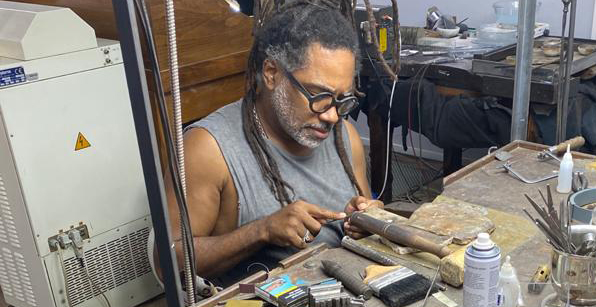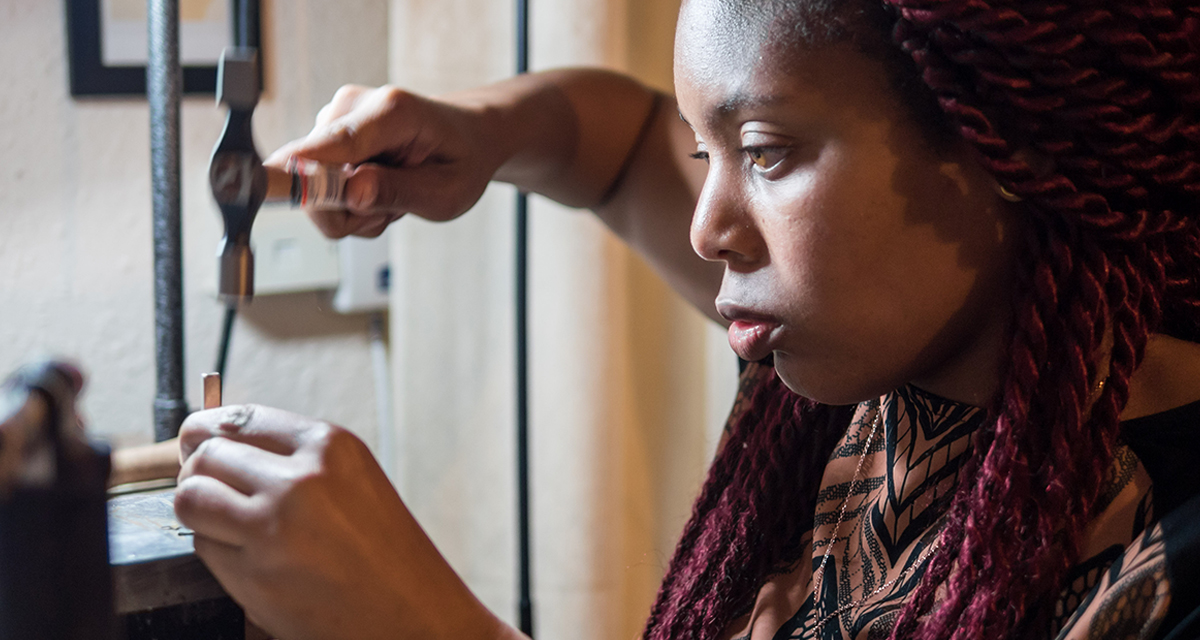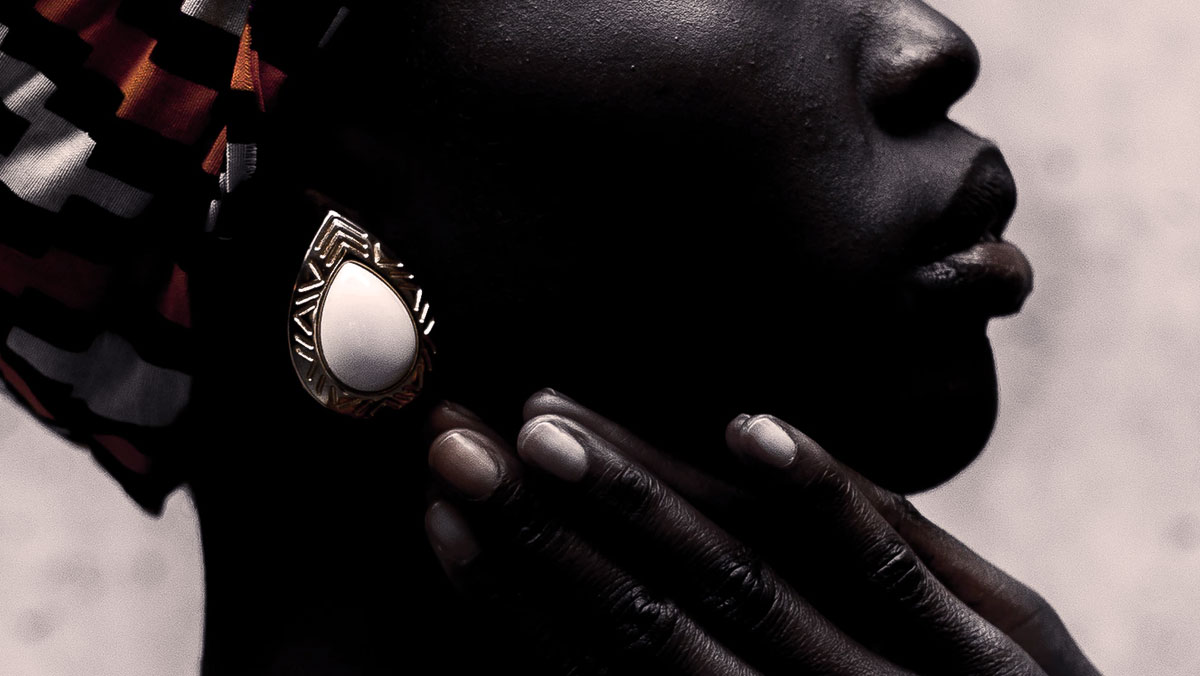
“Everyone’s listening now, and we need to take advantage of that. This is not the time for tiptoeing.” –Edward Enninful, EIC, British Vogue
It is true that actions speak louder than words. In the aftermath of the worldwide Black Lives Matter protests, we are seeing a much-needed spotlight on who is really stepping up to help drive true equality, who is not, and the individual actions that really add up to make a change across industries and society at large.
Kassandra Lauren Gordon and CASTRO help illuminate the prominent and powerful black talent and voices in the jewelry and creative industries but also reveal the gaping inequalities and lack of representation that still exist. Unapologetically authentic, their brands and work plays show a powerful vision, a meaningful artistic expression, freedom to portray the world as they see it, and perhaps a new reality. Their inspiration is taken from life experiences, the planet, humanitarian issues, and heritage, and tells important narratives with a bold aesthetic that shines through. As prominent black jewelers, both designers are passionate about using their work to help the jewelry industry take accountability, gain further understanding about race, the challenges and prejudice that black jewelers face within the industry, and vitally take action to help level the capitalist playing field.
I was personally really inspired to discover the world of Kassandra Lauren Gordon here in London and her recent work with the black jeweler incubator program in the UK and its subsequent social impact report. Like all powerful voices, we learn about how their brand and work has evolved over time and continues to evolve. We hope you discover the meaning and magic in their brands and designs as I did. As consumers, we can move towards a more equal world by committing to discovering and buying from black designers and brands like Kassandra and CASTRO.
Brandingmag: How would you describe your brand? Has your brand philosophy developed over time? How?
Kassandra Lauren Gordon: Jewelry with passionate storytelling. Every jewelry piece has at least one story and memories attached to it. I only want to create meaningful jewelry. I would describe my brand as vibrant, authentic, personable, and bold.
Yes, the brand philosophy developed over time. Moving from classic branding for fine jewelry (black and white) to orange, pink, and yellow. Standing out from the saturated crowd. In recent times, I have been more comfortable showing the ‘brand voice’ online. This means talking about humanitarian issues and my heritage.
CASTRO: “The art of Eclecticism”
Bm: What drove you to become a jeweler and what motivates you daily about your work?
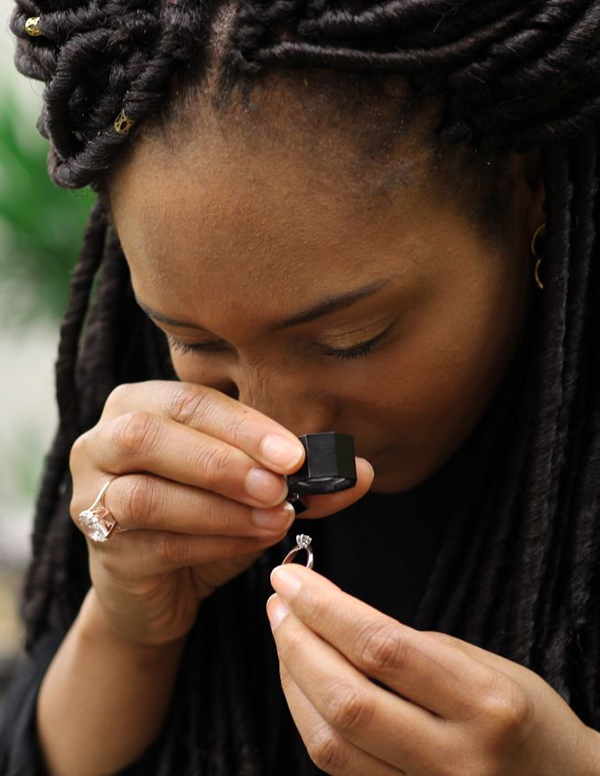 KLG: I have always loved jewelry. My mum gave me a gold locket when I was 9 years old; I knew then that jewelry equals love. I was into beading when I was young. When I was growing up I never knew you can make jewelry as a grown-up. I did my first silversmithing course nearly 10 years ago.
KLG: I have always loved jewelry. My mum gave me a gold locket when I was 9 years old; I knew then that jewelry equals love. I was into beading when I was young. When I was growing up I never knew you can make jewelry as a grown-up. I did my first silversmithing course nearly 10 years ago.
What motivates me is that I can make people happy and feel good through jewelry. Making jewelry is meaningful art – it can be a glue to strengthen relationships.
When I was 13, I noticed that jewelry transformed people. I saw, when people wear jewelry, it brings their personality to life. There is a freedom to choosing pieces that speak to you, that are about personal expression and tap into your experiences. My pieces appeal to a woman who is bold, fearless, and unapologetic about who she is. She has the courage to show herself and allow herself to continue on a journey of discovery about her own growth and the world around her. This is why I have chosen space as one of my themes. There is a texture to the sky, one that relates to the different moods and allure that aligns with women. I try and bring out that feeling in my designs.
There is also the duality of the magical and mystery of the sky – the planets are constantly moving, the stars are twinkling, shining brightly. This movement and sparkle are aspects I attempt to capture in my designs – they will delight and intrigue the senses, they will move with the body, the will guide and represent to the woman who wears my pieces, the course she is traveling in life at the moment.
But the pieces, like the women who wear them, also have a sense of direction. They are classically minimal so that they can work with other pieces in a woman’s existing jewelry wardrobe.
C: I wanted to be the second black-owned jewelry store in my birth city. There was only one, which I was very happy for. We were just selling jewelry we bought at wholesale. A customer came one day and asked us to tear down and make a new men’s ring from a woman’s ring with diamonds size of ice cubes. The process was so fascinating, start to finish, and his face was happier than that of the regular customers. That was the start of the bug.
What motivates me? I honestly need a lot of motivation. I’d rather be outside than inside so I use what is around visually and solid to touch. I need the sensation of reality mixed with the fantasy of my daydreaming mind. I like to go out and people watch. I like to try to imagine what people passing are thinking. I take inspiration from the day-to-day – I might notice an earring twisted on a lady and it may trigger a thought for new earrings or something – “real” reality. My dreams are the biggest motivator as I have many and most pieces I make are based on some dream.
Bm: Do you have a particular strategy for developing your brand?
KLG: Not to be fearful. To be unapologetically authentic and consistent on social media. I used to think the world wasn’t ready for someone like my brand in the jewelry world and was better to be quiet. Another thing is to make more jewelry – I feel the more people see, the better ‘feel’ they have of what the brand is about. I am definitely going to show more of my Jamaican and Rastafarian heritage.
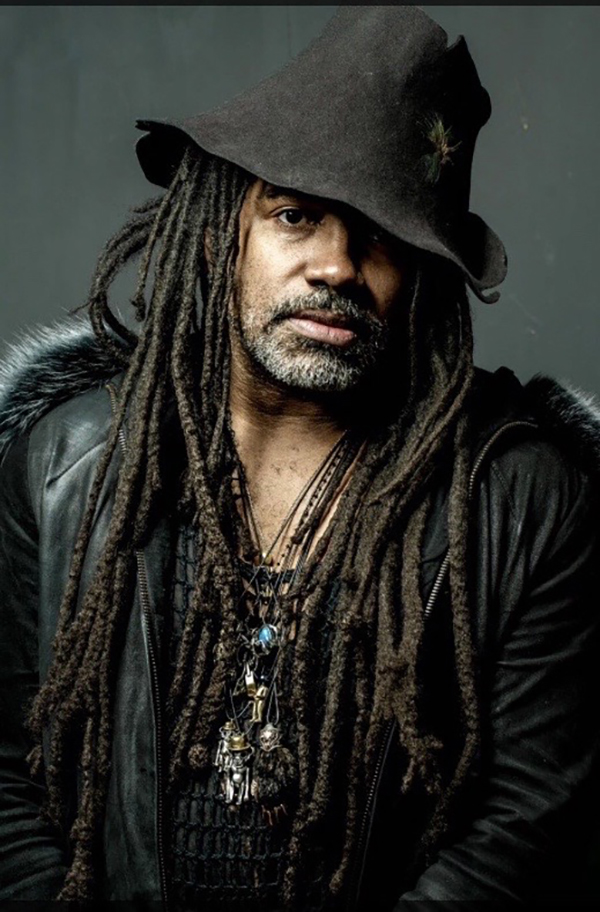 C: Stay small as long as possible. Be careful of overbuying materials. Keep your overheads low. Use what you already have to get what you want. Don’t get too big for your boots (i.e., don’t forget where you came from and who the fans were that helped you launch).
C: Stay small as long as possible. Be careful of overbuying materials. Keep your overheads low. Use what you already have to get what you want. Don’t get too big for your boots (i.e., don’t forget where you came from and who the fans were that helped you launch).
Over time, we tend to get better at what we do and can alienate our original customers. I think we can still make things for that category, there’s no need to abandon. Decide what you want your brands to stand for; if you want to be a brand that is out there or exclusive. It’s important to start the same way you go out.
Know your worth. I see too many black designers selling their work for pennies on the dollar. Some feel the outside pressure of making it ‘affordable’. It’s an interesting question: What is affordable? I think it depends on the person’s priorities.
Don’t do wholesale! I don’t care how big the store is – if they are big then they should really pay you. Make them pay something or it can bankrupt your brand fast.
Decide who your target audience is and get your name out into those circles. Either by press or word of mouth. Take chances. With digital, there are no excuses.
Bm: Prominent black voices are rare in jewelry, and we’re seeing that the design and fashion industries need to nurture diverse talent and create a network of opportunities for the work of minorities to be highlighted and to support their growth. What’s your vision for the industry and how we can collectively achieve that?
KLG: It’s sad and heartbreaking that black voices and work are not highlighted as much in the design and fashion industries. In the last couple of weeks, I just became aware of UK-based black jewelers like Melanie Eddy and Satta Matturi. I don’t understand why. In theory, talent should prevail – but it’s not always the case. My vision is for a black jeweler incubator program in the UK. Time will tell if the design and fashion industries are going to commit long-term to support black designers, rather than treat it as a tick box exercise and social media phase.
Last month, I was raising money for a Hardship Fund for UK black jewelers and a social research report.
I have raised nearly £20,000 with the help of the jewelry community. The Goldsmith’s Company charity is collaborating with me to administer the fund. The social research report will look at the experiences of 10 UK black jewelers.
C: It has to be torn down and be built back collectively by all those involved and who want to be. It’s been an elitist approach that can be difficult to break into. If you don’t act the way they want you to act, they make you the angry man, an aggressive black person, or make out that you are “difficult to work with” if you get in at all.
As for our (African/black) people, we need to participate more in these industries in the middle and not play the bench or outside the arena. Our people invented jewelry. We have been trained not to focus on the arts because its seen as not profitable. To only work in factories and desk jobs, mostly. We just need the door open and to be treated EQUALLY – the magic word. So simple…but most see it as a racist word. We excel with a flare at everything we touch, if treated equally. Plain and simple. The industry sees us as a threat and does its best to suffocate us.
Honestly, the only way I see out is if we create our own lane. Let them have their lane and we have ours. If they were going to share, they would have done it already. We don’t need band-aids and BLACK LIVES MATTER STREETS. We have to get equality, not civil rights. That’s the 60’s.
Bm: What are your ambitions for your business/work and what is your focus for the next 12 months?
KLG:
- Launch a new website;
- Be known more to consumers and the commercial press;
- Create two jewelry collections by the end of the year.
C: Relocate to West Africa. Teach or advise underprivileged children the trade of jewelry making, design, marketing, etc. Also, resettle the brand there and get it to a point where it can be all in-house production and work with local miners. All 100% in Africa. It will be challenging but it’s no fun if there is no challenge.
I’d also like to do the TEFAF jewelry and art show and PAD art London show solo.
Bm: Who would you most like to meet in the world and spend an hour with? Why?
KLG: M. Scott Peck – the author of the book ‘The Road Less Travelled’. It’s a classic self-development book from the 1970s. I want to know what advice he actually followed from his book and learn more great life lessons.
C: My son. I haven’t seen him in a long time, especially with the pandemic going on. Nothing else matters.
Cover image source: Oladimeji Odunsi
